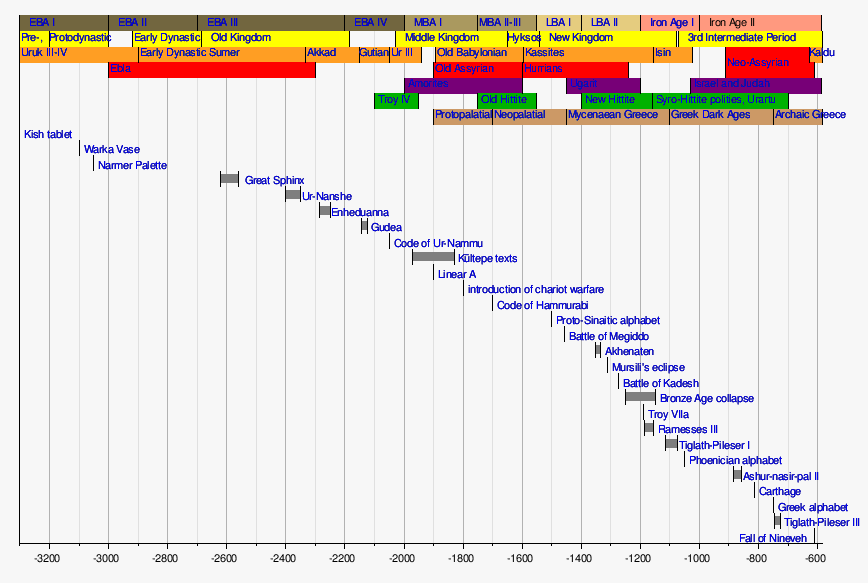Contents
The Bronze Age in the Indian subcontinent begins around 3000 BCE, and in the end gives rise to the Indus Valley Civilisation, which had its (mature) period between 2600 BCE and 1900 BCE. It continues into the Rigvedic period, the early part of the Vedic period. It is succeeded by the Iron Age in India, beginning in around 1000 BCE.
South India, by contrast, remains in the Mesolithic stage until about 2500 BCE. In the 2nd millennium BCE, there may have been cultural contact between North and South India, even though South India skips a Bronze Age proper and enters the Iron Age from the Chalcolithic stage directly. In February 2006, a school teacher in the village of Sembian-Kandiyur in Tamil Nadu discovered a stone celt with an inscription estimated to be up to 3,500 years old.[1] [2] Indian epigraphist Iravatham Mahadevan postulated that the writing was in Indus script and called the find "the greatest archaeological discovery of a century in Tamil Nadu".[1]
| Date range | Phase | Era |
| 3300-2600 | Early Harappan (Early Bronze Age) | Regionalisation Era c. 4000-2500/2300 BCE (Shaffer)[3] c. 5000-3200 BCE (Coningham & Young)[4] |
|---|---|---|
| 3300-2800 | Harappan 1 (Ravi phase) | |
| 2800-2600 | Harappan 2 (Kot Diji Phase, Nausharo I, Mehrgarh and Vinya VII) | |
| 2600-1900 | Mature Harappan (Indus Valley Civilisation) | Integration Era |
| 2600-2450 | Harappan 3A (Nausharo II) | |
| 2450-2200 | Harappan 3B | |
| 2200-1900 | Harappan 3C | |
| 1900-1300 | Late Harappan (Cemetery H); Ochre Coloured Pottery | Localisation Era |
| 1900-1700 | Harappan 4 | |
| 1700-1300 | Harappan 5 |
World timeline

See also
- Periodisation of the Indus Valley civilisation
- Iron Age in India
- Indus Valley Civilisation
- Indus script
References
- ^ a b Subramaniam, T. S. (May 1, 2006). ""Discovery of a century" in Tamil Nadu". The Hindu. Archived from the original on June 15, 2006. Retrieved 2008-05-21.
- ^ Subramaniam, T. S. (May 1, 2006). "Significance of Mayiladuthurai find". The Hindu. Archived from the original on April 30, 2008. Retrieved 2008-05-23.
{{cite news}}: CS1 maint: unfit URL (link) - ^ Manuel 2010, p. 149.
- ^ Coningham & Young 2015, p. 145.
Literature
- Coningham, Robin; Young, Ruth (2015). The Archaeology of South Asia: From the Indus to Asoka, c. 6500 BCE – 200 CE. Cambridge University Press. ISBN 978-1-316-41898-7.
- Manuel, M. J. (2010). "Chronology and culture-history in the Indus Valley". Sirinimal Lakdusinghe Felicitation Volume. Battaramulla: Neptune. pp. 145–152.


